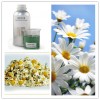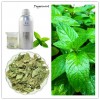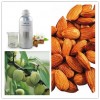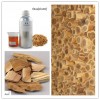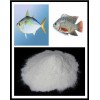Beer making Hop Pellets are whole hops that have been ground and pressed into a mold.
Resins seal the outside of hop pellets when they are pressed, leaving the interior fresh.
We prefer to use hop pellets to ensure the freshness of our products.
Store hops in your refrigerator or freezer for longest life.
Aroma: Similar to Cascade or Amarillo – Citrus (Grapefruit) and Floral.
Some woodsy, earthy notes too.
Alpha Acid: Usually between 5.7-6.3%
Typical Usage: Aroma for the most part. Some texts had it as a moderate bittering hop too.
Beer Styles: Pales, IPA, and a nice American Brown.
There are two kinds of hop pellets: Type 90 and Type 45.
The type designation refers to the approximate percentage yield from the volume of
row hops processed.
Thus if 100 kg of row hops are processed into Type 90, the yield is approx. 90 kg.
If they are processed into Type 45 the yield is approx. 45 kg.


The difference between the two products lies in the technical processing.
Whereas for Type 90 the row hops are simply cleaned and dried and then ground
Type 45 pellets undergo a more complicated process. In this case the hop powder
is concentrated mechanically to a uniform bittering value, just as the brewer needs it.
The bales of hops in the warehouse are opened and emptied mechanically.

The hops are then dried to a moisture content of 7 to 8 %, cleaned, deep frozen,
ground and than separated. Here the bracteoles, stalks, stems and other less
desirable parts of the hop are separated from the valuable lupulin.
Standardization of the product is achieved by the controlled addition of the
required quantity of pure lupulin to the spent hops.
This process ensures that the brewer products beer with a uniform content of bittering
extract regardless of the quality of the hop harvest and with a reduced volume of hops,
which leads to considerable savings in transport and storage costs.










